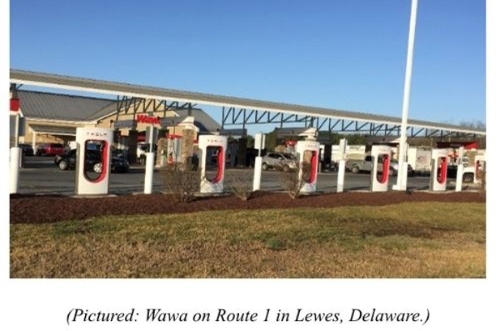
Claims of an Electric Vehicle Charging Shortage are a Myth
Director of the Center for Energy & Environmental Policy
April 23, 2021
President Biden wants to build 500,000 new electric vehicle (EV) charging stations by 2030 using government subsidies to fill an imaginary shortage. We urge the federal government to allow markets to work and to stay out of subsidizing EV chargers. We don't need to add to the federal deficit chasing a myth.
Empty EV charging stations are a common occurrence. National reports show utilization rates of just 2% for fast chargers commonly used at public charging stations, with certain highly utilized stations reaching 20%.
The free market is working to supply charging infrastructure. We certainly don't need more federal subsidies or added electric costs to low-income families paying for chargers for the wealthy.
This result is not unexpected when the same National Renewable Energy Laboratory (NREL) report estimates 88% to 95% of the charging occurs at home and work.
Time of use electricity rates encourages home charging with costs ranging from $0.05 cents to $0.10 cents per kilowatt-hour, while public charging costs $0.25 cents per kilowatt-hour.
The U.S. Department of Energy: "Alternative Fuels Data Center" reveals the number of charging station locations, outlets, vehicles, and the number of chargers needed to meet demand. Forty-eight states had more chargers than needed to meet demand by an average of 1.5 times in a 2019 summary. The other two states have since caught up.
EVs represent only one-half percent of the light-duty vehicle fleet in the US, but there are only four times more gas stations than electric charging station locations. There is currently about one charging outlet for every 15 EVs compared to one fuel pump for every 190 vehicles powered by gasoline and diesel fuel. It's no surprise charging outlets sit idle most of the time.
Today gasoline sales are concentrated at convenience stores to encourage shoppers to buy food, beverages, cigarettes, and other supplies as they tank up. The locations make a lot more profit from store sales than from fuel sales.
The NREL study indicates 86% of EV sales are to people making more than $60,000 a year. It is no wonder convenience stores are now adding fast EV chargers to attract this wealthier clientele. In addition, EV charging infrastructure is being built in unconventional locations to attract that same wealthier customer.
With no concerns about spills or fuel storage, EV chargers are being installed at shopping malls, restaurants, and hotels. Tesla has set up its charging network to incentivize sales of its vehicles. It is not surprising that over the last 18 months, charging locations grew 30% faster than new EV purchases.
Regulated electric utilities have obtained approval from the "utility commissions" to invest in charging stations. The cost plus a guaranteed 10% profit gets passed onto lower-income electric customers that can't afford the $15,000 to $20,000 premium for an EV. This also gives an unfair advantage to other charging investors who have to risk their capital investment.
In Delaware and 28 other states, the "utility commission" determined electric charging to be a competitive market not under the commission's control. Electric utilities can still invest in charging stations with investor money. More states should adopt this example.
|
|